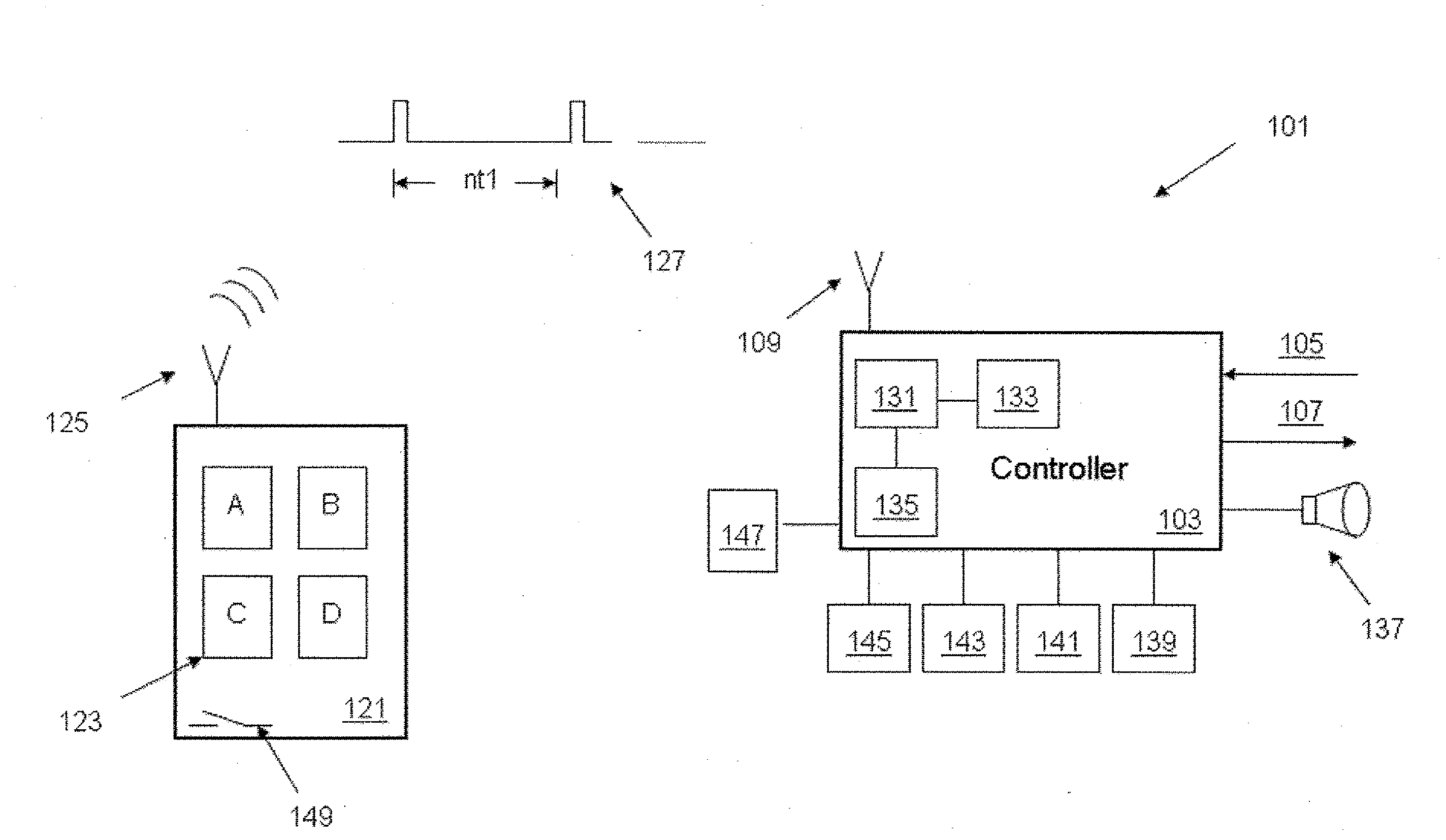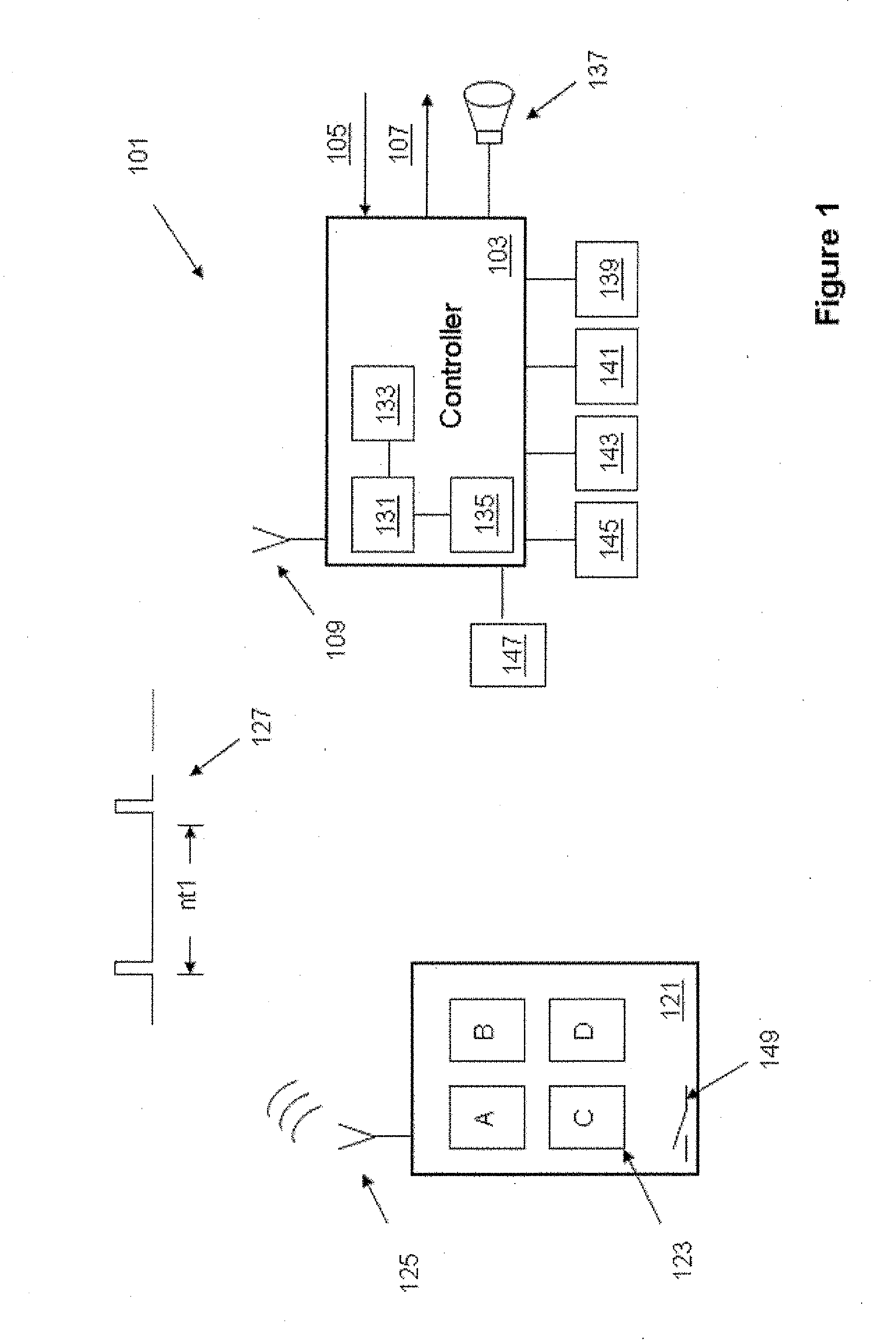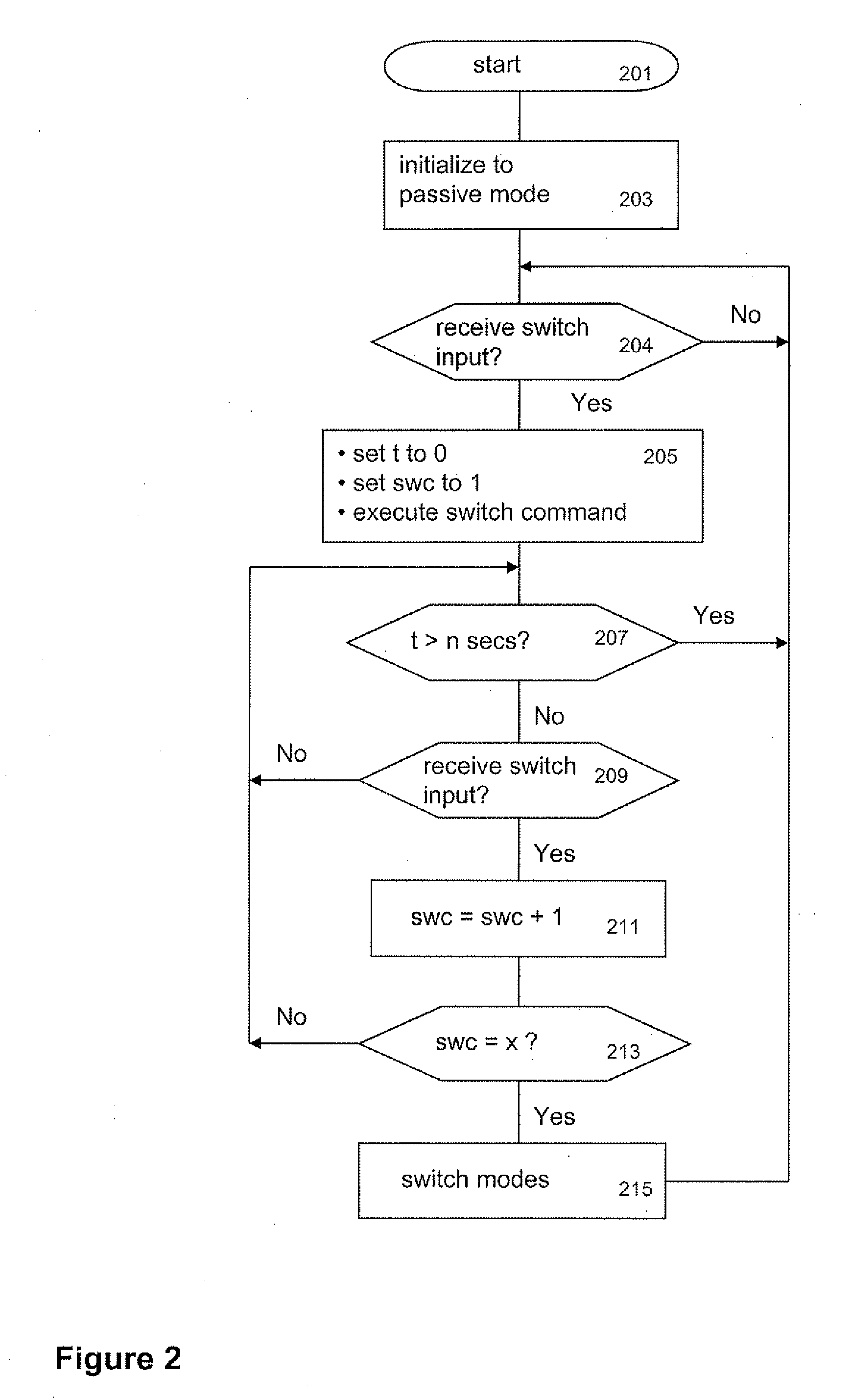Power-save for passive and two-way transmitters
a two-way transmitter and passive technology, applied in the field of power saving, can solve the problems of user stranded, unsatisfactory active mode, and significantly faster than the conventional active transmitter, and achieve the effect of consuming more power and depleting the power source faster
- Summary
- Abstract
- Description
- Claims
- Application Information
AI Technical Summary
Benefits of technology
Problems solved by technology
Method used
Image
Examples
Embodiment Construction
[0015]Shown in FIG. 1, is a representative security and / or vehicle convenience system (hereafter the “system”) 101. System 101 generally comprises one or more authorized transmitters 121 capable of transmitting command signals 127 to a controller 103. A status indicator (not shown) in the form of an audio and / or visual indicator such as an LED, a piezo or equivalent is present in the transmitter 121. One application of the status indicator (not shown) is to let the user know that battery is running low, and that the status has changed from one mode (Passive) to another mode (Active), or from two-way to one-way modes, and that the power source, such as a battery, should be changed or recharged. Such indication could be configured coincident with or at a threshold level preceding the automatic change of modes, which will be discussed in further detail below.
[0016]In response to the signal received from one or more authorized transmitters 121, controller 103 executes commands received ...
PUM
 Login to View More
Login to View More Abstract
Description
Claims
Application Information
 Login to View More
Login to View More - R&D
- Intellectual Property
- Life Sciences
- Materials
- Tech Scout
- Unparalleled Data Quality
- Higher Quality Content
- 60% Fewer Hallucinations
Browse by: Latest US Patents, China's latest patents, Technical Efficacy Thesaurus, Application Domain, Technology Topic, Popular Technical Reports.
© 2025 PatSnap. All rights reserved.Legal|Privacy policy|Modern Slavery Act Transparency Statement|Sitemap|About US| Contact US: help@patsnap.com



